 Under One Roof – The Yankees, The Cardinals
Under One Roof – The Yankees, The Cardinals
and a Doctor’s Battle to Integrate
Spring Training
By Adam Henig
Wise Ink Creative Publishing – 2016
$9.95
Under One Roof – The Yankees, The Cardinals and a Doctor’s Battle to Integrate Spring Training is more than a baseball book. It is also a biography and a history book – with an important story to tell about perseverance, courage and the battle for civil rights in the Jim Crow south; specifically in St. Petersburg, Florida.
It is the story of African American physician Ralph Wimbish in particular, but also of his family, and their impact on the city of Saint Petersburg, the pursuit of civil rights and Major League Baseball’s Spring Training. While Wimbish’s fight to change the treatment of black ballplayers in Spring Training provides the central hook for the book, readers also learn about the work of Ralph Wimbish and his wife Bette to help integrate public facilities from hospitals to restaurants to golf courses and beaches. For the Wimbishes, civil rights were truly a family affair. Here are just a few highlights:
- Ralph Wimbish organized St. Petersburg’s Ambassadors’ Club – comprised of the city’s African American leaders in business, education, law and medicine – to help finance and spur St. Petersburg’s civil right movement. Wimbish also later served as President of the St. Petersburg Branch of the NAACP.
- Wimbish’s wife Bette, a teacher and later an attorney, also was an active civil rights crusader and the first person of color to serve on the St. Petersburg City Council;
- Wimbish’s daughter Barbara was the first African American student to attend St. Paul’s Catholic High school in St. Petersburg.
- Wimbish’s son Ralph Jr., integrated the city’s all-white Little League.
As Henig accurately portrays, the Jim Crow South was no easy place for African Americans – particularly those who were willing to step forward in the cause of civil rights. Henig shares the story of how the Ralph and Bette Wimbish came to live in St. Petersburg, despite finding what seemed to be the perfect house in Tampa. In Henig’s words:
It was located in a predominantly white neighborhood, but since the previous owner was an African American, Bette felt comfortable that her neighbors would be agreeable or at least tolerant. She signed the papers.
The day before she was scheduled to move, the house was torched and burned down. The suspected arsonist was a nearby store owner and active member of the Ku Klux Klan. He was never charged. Distraught, Bette began looking elsewhere for her family to settle. Tampa was out, so the couple decided to start looking across the bay to Ralph’s hometown of St. Petersburg.
The rest, as they say, is history.
The level of Wimbish’s commitment and the depth of his influence are perhaps illustrated by the opposition’s response – more than one cross burning in the Wimbish’s front yard, a fire bomb thrown at their home and numerous death threats. Even without the baseball ties, this book tells an important story about an important (and risky) struggle.
Still, at the center of Henig’s book are Ralph Wimbish’s efforts to ensure that black baseball players who came to St. Petersburg for spring training were allowed to live and eat in the same places as their white teammates. Here’s Cardinals’ black first baseman Bill White (who would go on to become President of the National League) describing the situation in 1961:
I can’t stay at the same hotel as the white players. These players are my friends, yet I can’t go swimming with them. I can’t even go to the movies with them. Driving on the highways, I’ve got to be on the lookout for a Negro restaurant to eat because they won’t let me eat where the white folks eat.
The fact is, Black players for years had been forced to live in the homes of Black families and often take their meals with them, while the white players enjoyed St. Petersburg’s best (and segregated) hotels and restaurants.
In early 1961, Wimbish decided the unequal treatment of Black ballplayers taking part in Spring Training in St. Petersburg had gone on long enough. No longer would he tolerate separate housing for Black players in St. Petersburg (hence the title Under One Roof). It became a personal crusade. As Henig notes in the book:
If Major League Baseball had not heard of Dr. Ralph Wimbish. it soon would. He was about to turn its world upside down.
Henig does a great job of telling and documenting the tale of Wimbush’s fight to bring all ballplayers under one roof in St. Petersburg; as well as introducing us to his allies (and opposition) and the ultimate impact of his efforts.
Hall of Famer Bob Gibson’s recollection of the Cardinals’ 1961 move to the integrated Doctors’ Motel in St. Petersburg:
It was such a novelty in St. Petersburg to have an integrated hotel that the team’s residence soon became a “local tourist attraction,” as recalled by African American pitcher Bob Gibson. “People would drive by to see the white and black families swimming together.”
Ultimately, Under One Roof is a story well-worth telling (and reading) – well told. To order Under One Roof from Amazon.com, click here.
BBRT Note: Having lived in the pre-integration South in my youth (military family) – and witnessed first-hand such inequities as theaters that restricted black movie-goers to the balcony, restaurants that served white customers out front and black customers at tables in the kitchen, segregated restrooms and even separate water fountains – I took a special interest in Henig’s book (and would recommend it to anyone not familiar with the culture of segregation at the time).
Adam Henig is the author of Alex Haley’s Roots: An Author’s Odyssey. His writings have appeared in the San Francisco Book Review, Tulsa Book Review, Medium, The Biographer’s Craft and Blogcritics. He’s also been featured on the podcast, New Books Network: African American Studies. Adam is an active member of the Biographers International Group (BIO).
For more baseball book reviews, click here.
I tweet baseball @DavidBBRT
Member: Society for American Baseball Research; The Baseball Reliquary; Baseball Bloggers Alliance.

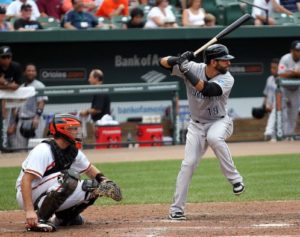
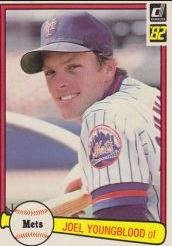 Three players share the record for the most franchises played for in a single day at two. The first two to accomplish this feat were Max Flack and Cliff Heathcote, who were traded for each other between games of a Memorial Day 1922 Cubs/Cardinals doubleheader. The two outfielders each suited up against their previous team for Game Two. Both went hitless in game one of the doubleheader and both collected hits for their new teams in the second game (Flack a single in four at bats, Heathcote a pair of singles in four trips to the plate).
Three players share the record for the most franchises played for in a single day at two. The first two to accomplish this feat were Max Flack and Cliff Heathcote, who were traded for each other between games of a Memorial Day 1922 Cubs/Cardinals doubleheader. The two outfielders each suited up against their previous team for Game Two. Both went hitless in game one of the doubleheader and both collected hits for their new teams in the second game (Flack a single in four at bats, Heathcote a pair of singles in four trips to the plate).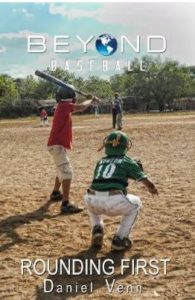
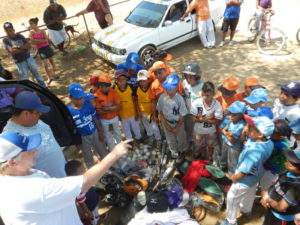
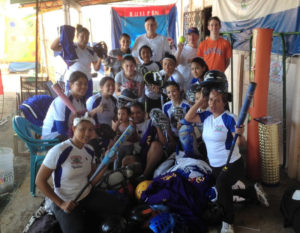
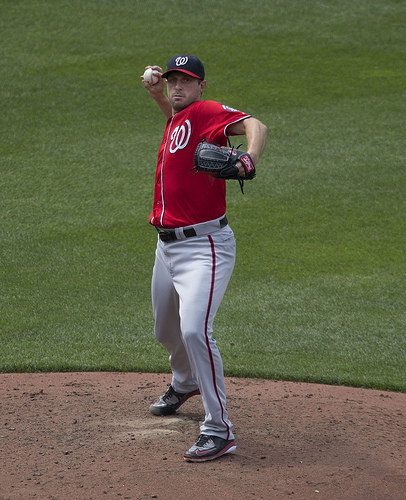




 What do the following have in common – a one-armed major league outfielder, a pitcher who once threw a no-hitter while high on LSD, a team owner who sent a midget to the plate, a man in a chicken suit, a member of Major League Baseball’s 3,000-hit club, an MLB manager who won eight World Championships, a baseball card designer, a surgeon, a labor leader, a statistical wizard and more than one best-selling author?
What do the following have in common – a one-armed major league outfielder, a pitcher who once threw a no-hitter while high on LSD, a team owner who sent a midget to the plate, a man in a chicken suit, a member of Major League Baseball’s 3,000-hit club, an MLB manager who won eight World Championships, a baseball card designer, a surgeon, a labor leader, a statistical wizard and more than one best-selling author?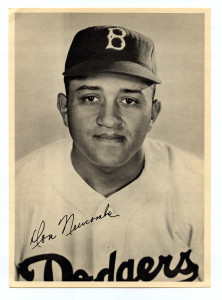
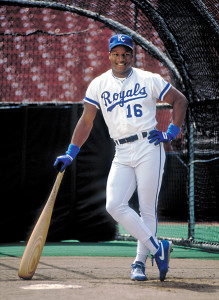

 In fact, the critical success of Hano’s A Day In the Bleachers – with new editions published in 1982, 2004, 2006 – catapulted Hano to the top echelon of sport writers. Over the years, Hano’s work has appeared in the likes of Sport, Sports Illustrated, True’s Baseball Yearbook, the Saturday Evening Post and major news media like the New York Times and Los Angeles Times. He’s written more than 500 articles and more than two dozen books (more than one million copies sold) – including biographies of such stars as Willie Mays, Sandy Koufax and Roberto Clemente. He was also a regular contributor to the annual Baseball Stars series of biographies and, in 1967, published his own volume of baseball bios – The Greatest Giants of Them All. In 1964, Hano was named the Magazine Sportswriter of the Year by the National Sportscasters and Sportswriters Association. Hano’s career is documented in the recently released film – Hano! A Century in the Bleachers.
In fact, the critical success of Hano’s A Day In the Bleachers – with new editions published in 1982, 2004, 2006 – catapulted Hano to the top echelon of sport writers. Over the years, Hano’s work has appeared in the likes of Sport, Sports Illustrated, True’s Baseball Yearbook, the Saturday Evening Post and major news media like the New York Times and Los Angeles Times. He’s written more than 500 articles and more than two dozen books (more than one million copies sold) – including biographies of such stars as Willie Mays, Sandy Koufax and Roberto Clemente. He was also a regular contributor to the annual Baseball Stars series of biographies and, in 1967, published his own volume of baseball bios – The Greatest Giants of Them All. In 1964, Hano was named the Magazine Sportswriter of the Year by the National Sportscasters and Sportswriters Association. Hano’s career is documented in the recently released film – Hano! A Century in the Bleachers. Well, April is behind us and – if you are from Minnesota, you are banking on the old “April showers bring May flowers” adage, because it’s been plenty wet here. April not only brought showers to Minnesota, but also plenty of action to major league baseball – from the Dodgers opening the season with three straight shutouts to a no-hitter by the Cubs’ Jake Arietta (his second) to Rockies’ rookie Trevor Story’s ten April home runs (tying the MLB rookie record) to A.J. Pierzynski becoming just the ninth catcher to reach 2,000 hits. It was an eventful month – and it’s time for BBRT’s traditional look at the past month of the MLB season. I hope you enjoy this look back at April – and come across a highlight or two you may have missed. (Note: April is always the easiest month to “wrap,” since monthly and year-to-date leaders are the same.) Before we get into detailed highlights and statistics, here are a few quick observations.
Well, April is behind us and – if you are from Minnesota, you are banking on the old “April showers bring May flowers” adage, because it’s been plenty wet here. April not only brought showers to Minnesota, but also plenty of action to major league baseball – from the Dodgers opening the season with three straight shutouts to a no-hitter by the Cubs’ Jake Arietta (his second) to Rockies’ rookie Trevor Story’s ten April home runs (tying the MLB rookie record) to A.J. Pierzynski becoming just the ninth catcher to reach 2,000 hits. It was an eventful month – and it’s time for BBRT’s traditional look at the past month of the MLB season. I hope you enjoy this look back at April – and come across a highlight or two you may have missed. (Note: April is always the easiest month to “wrap,” since monthly and year-to-date leaders are the same.) Before we get into detailed highlights and statistics, here are a few quick observations.






